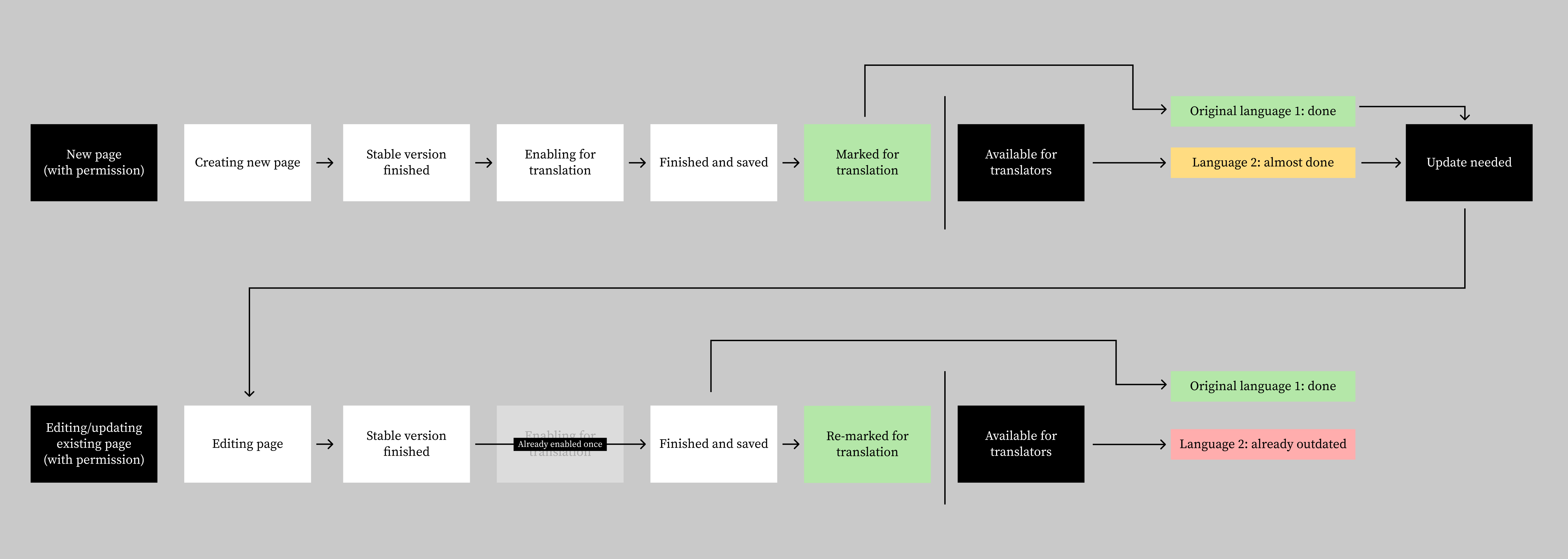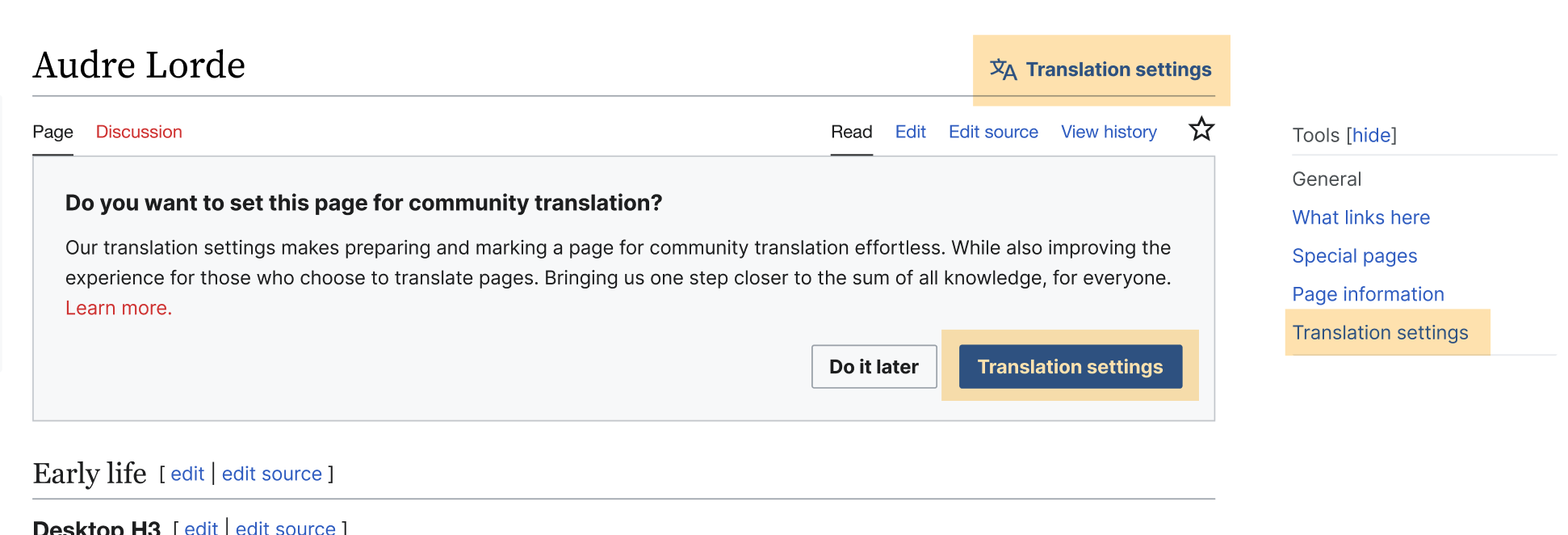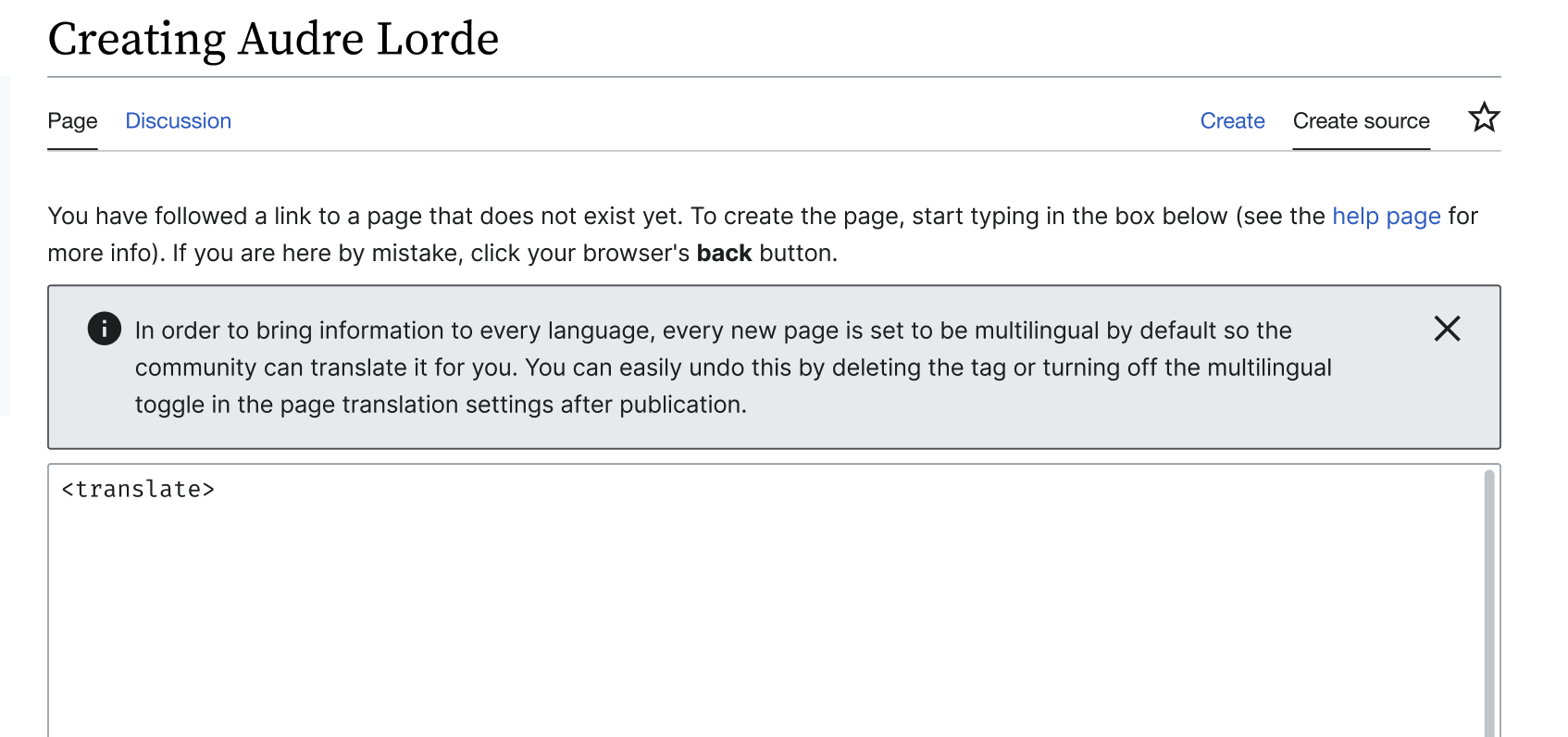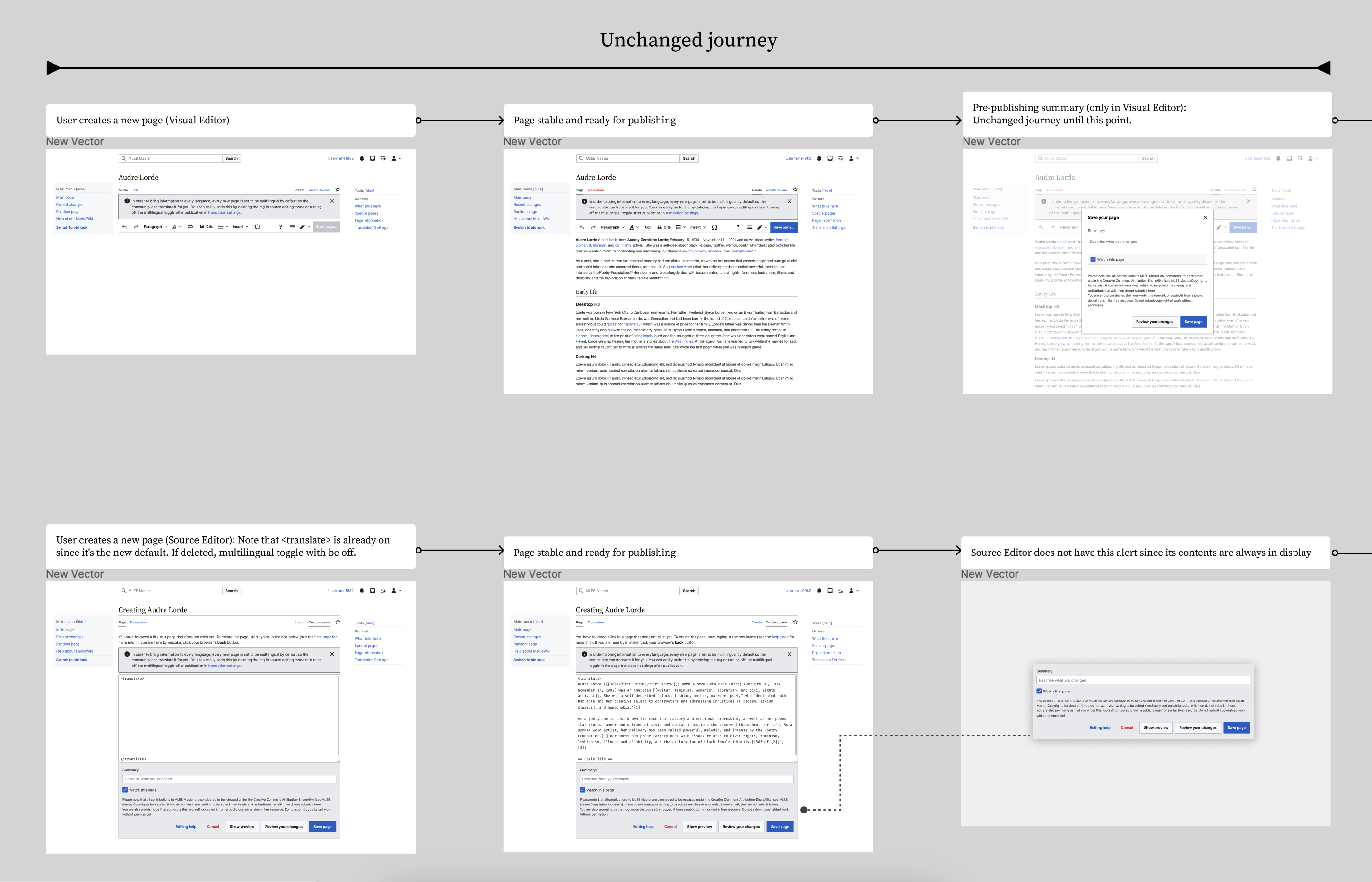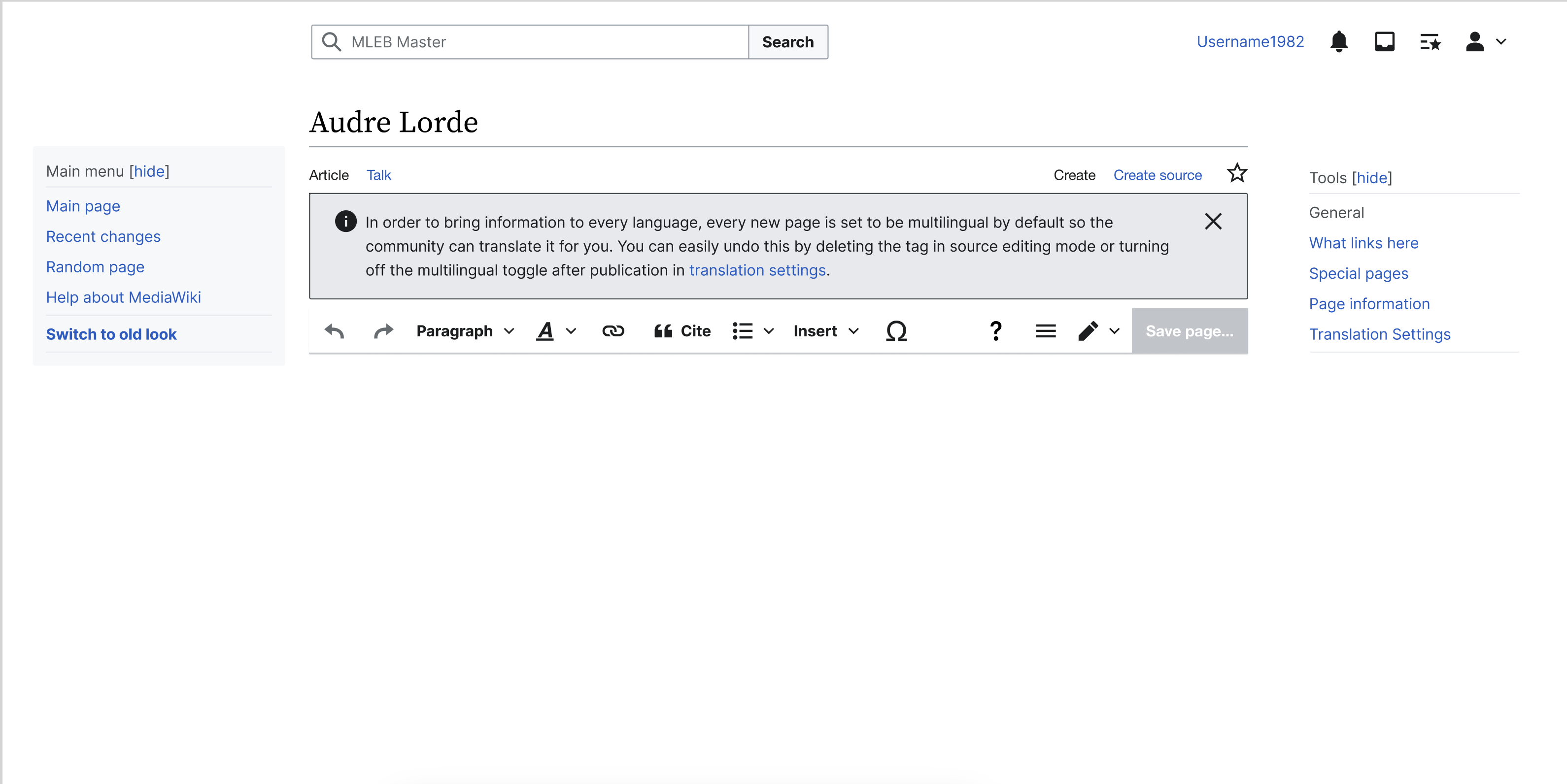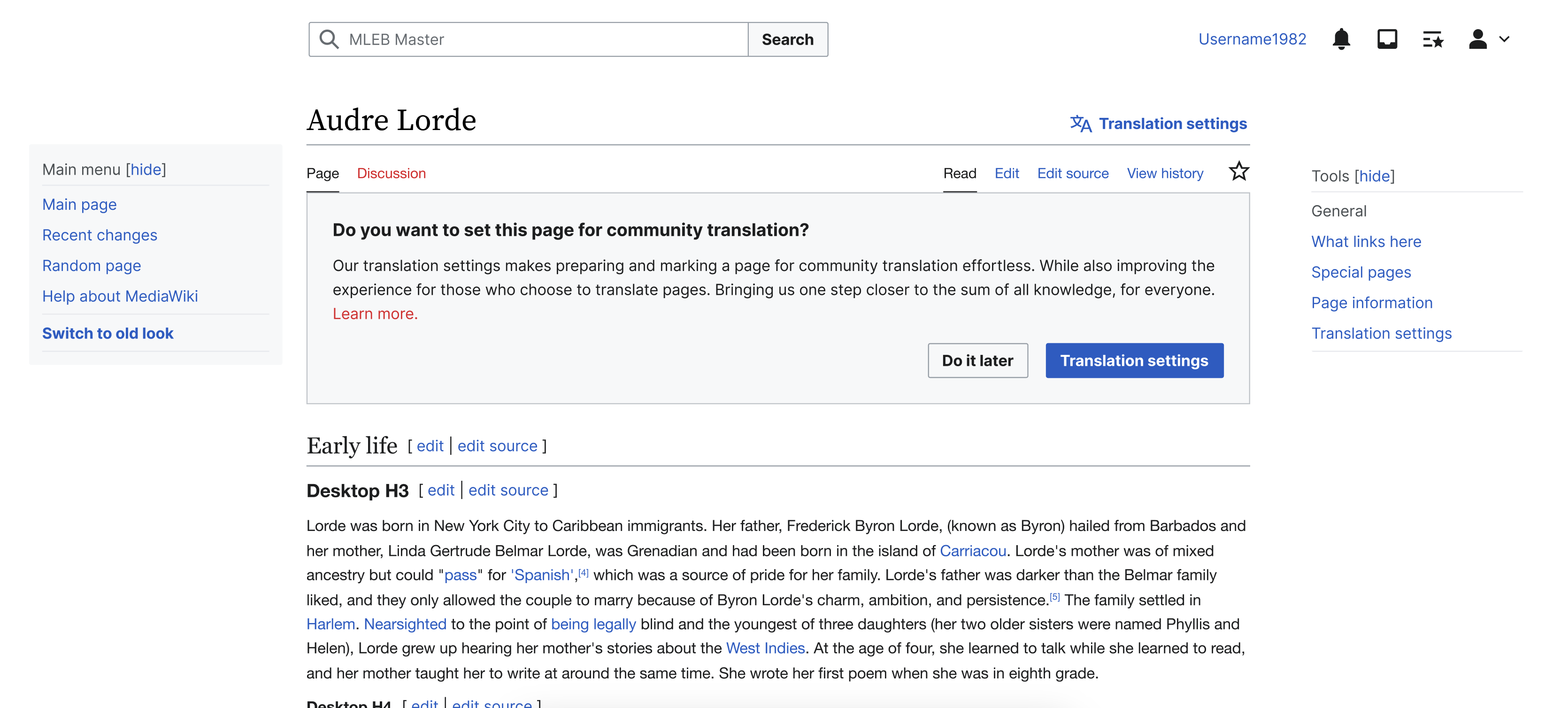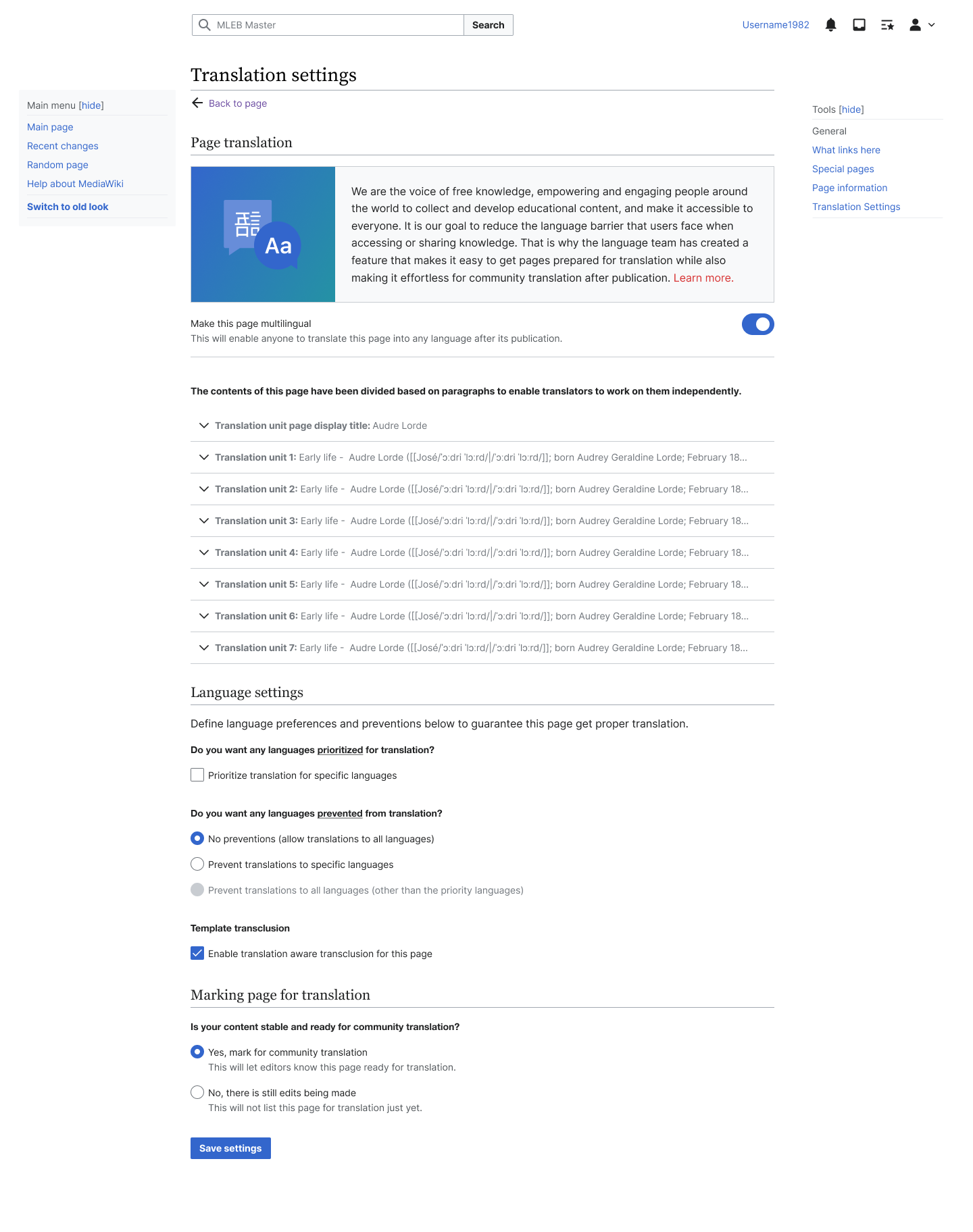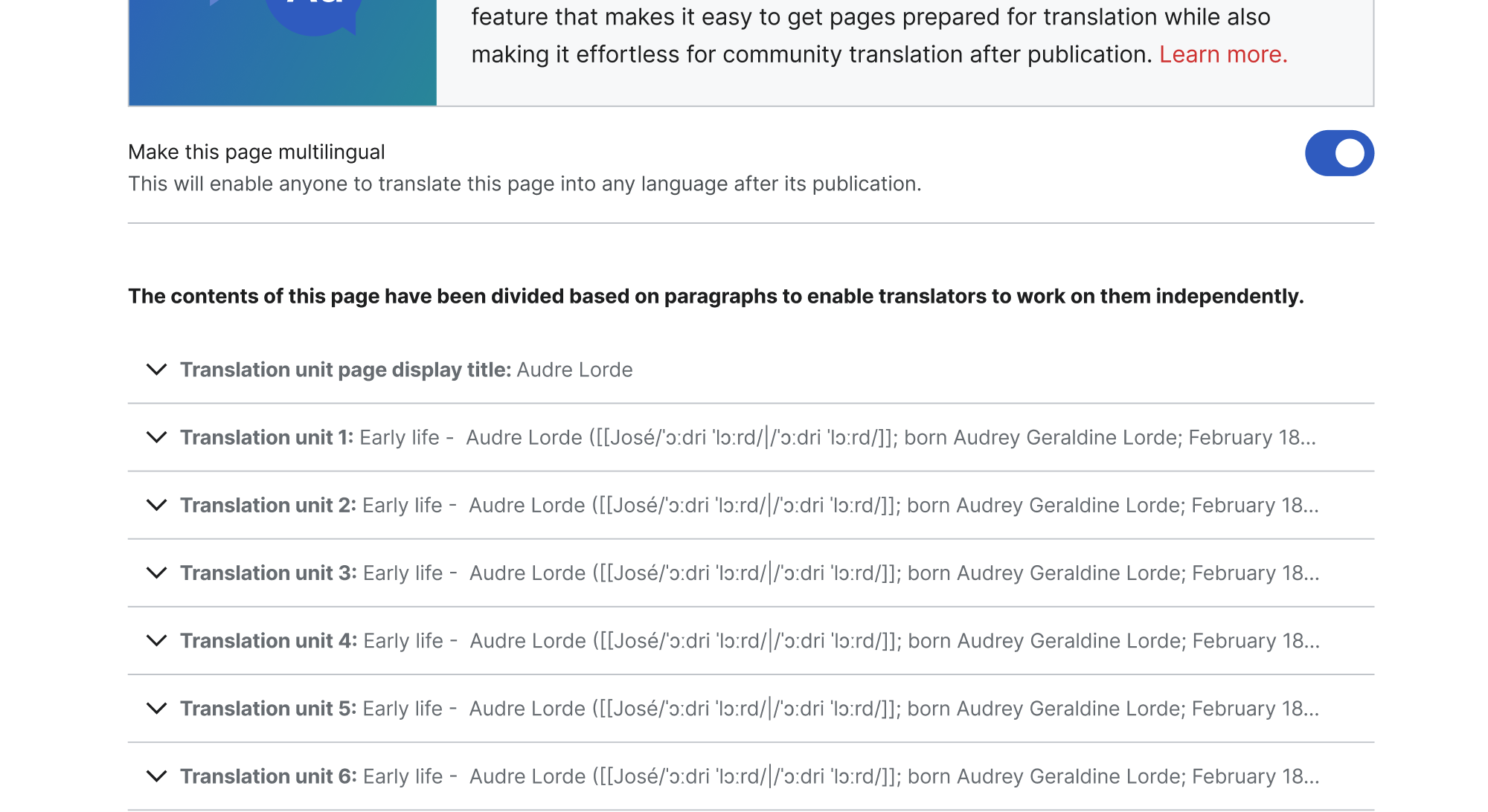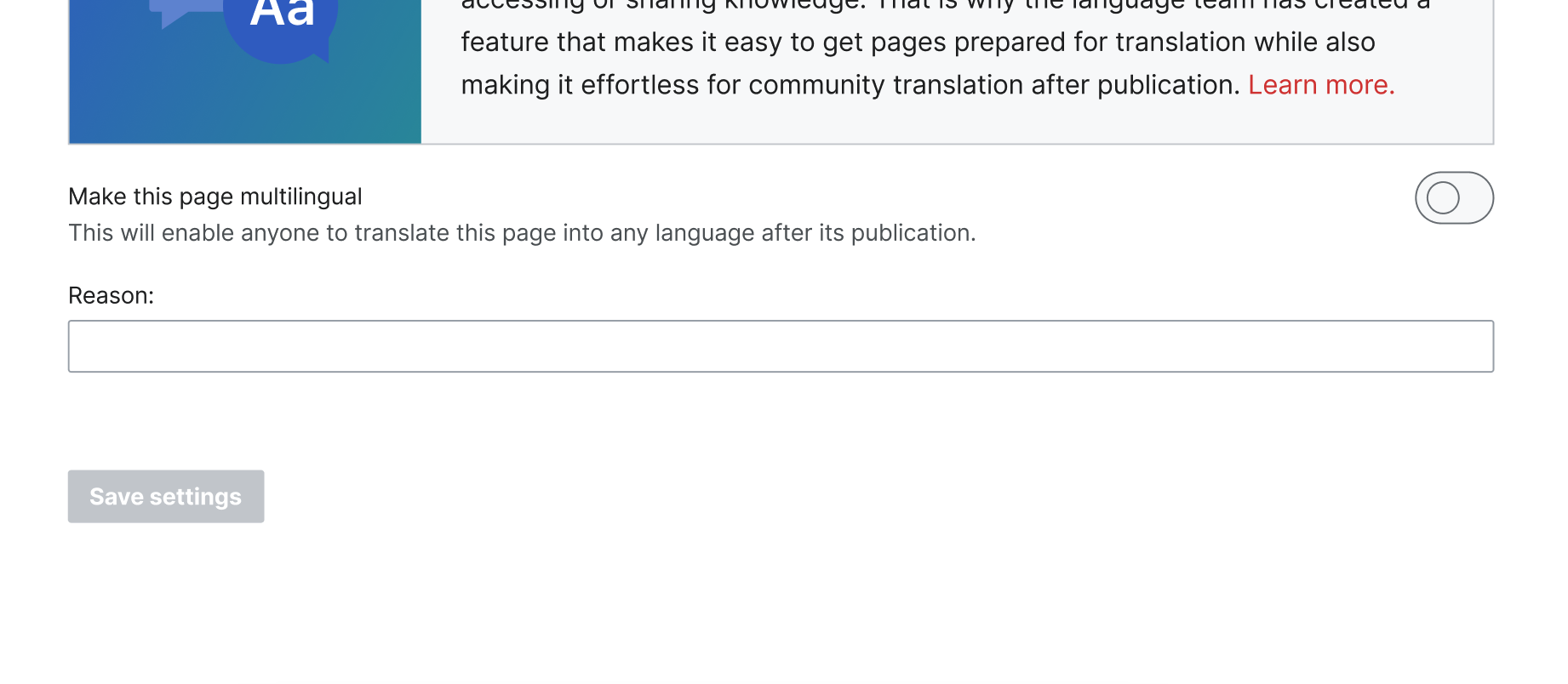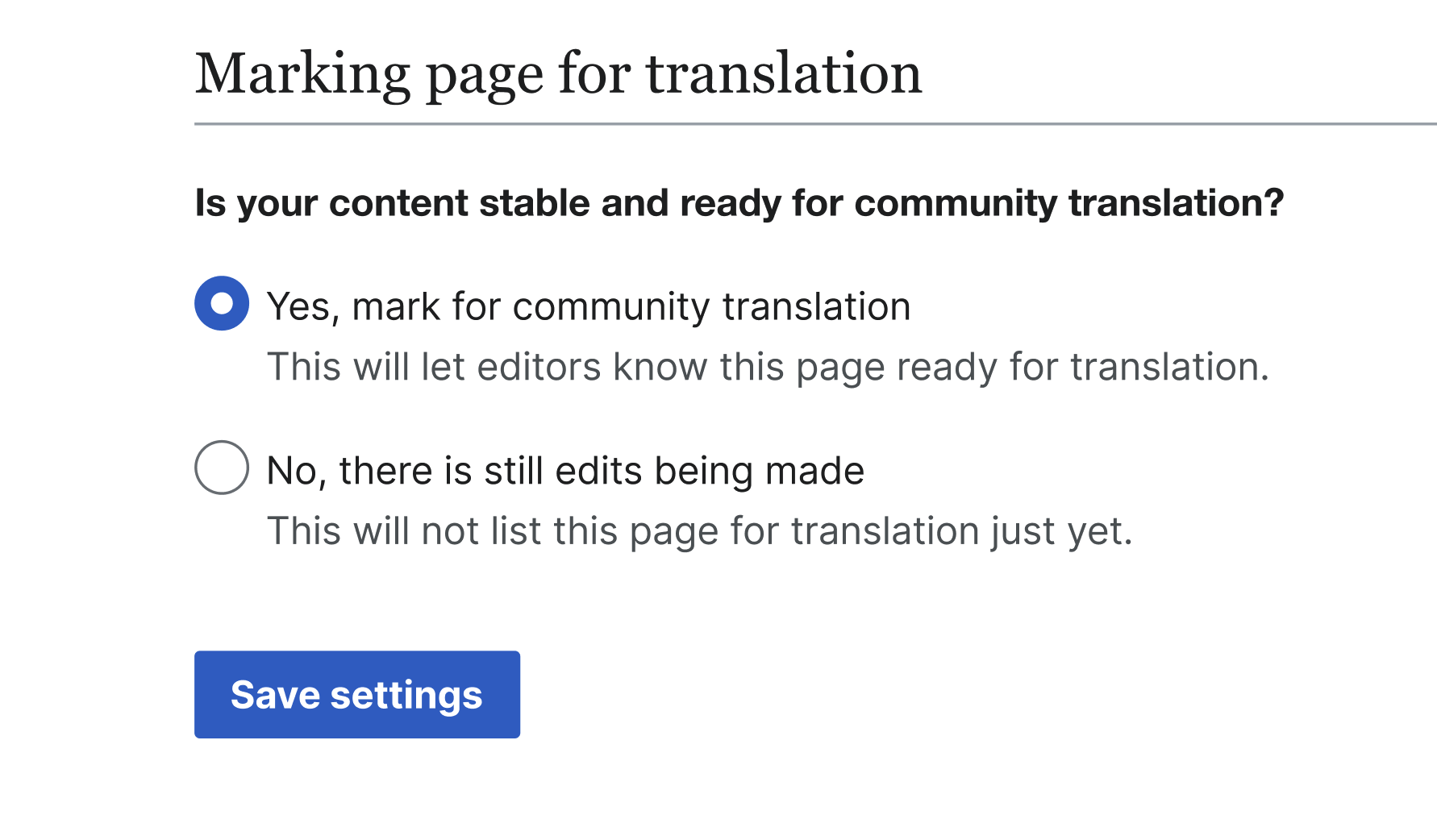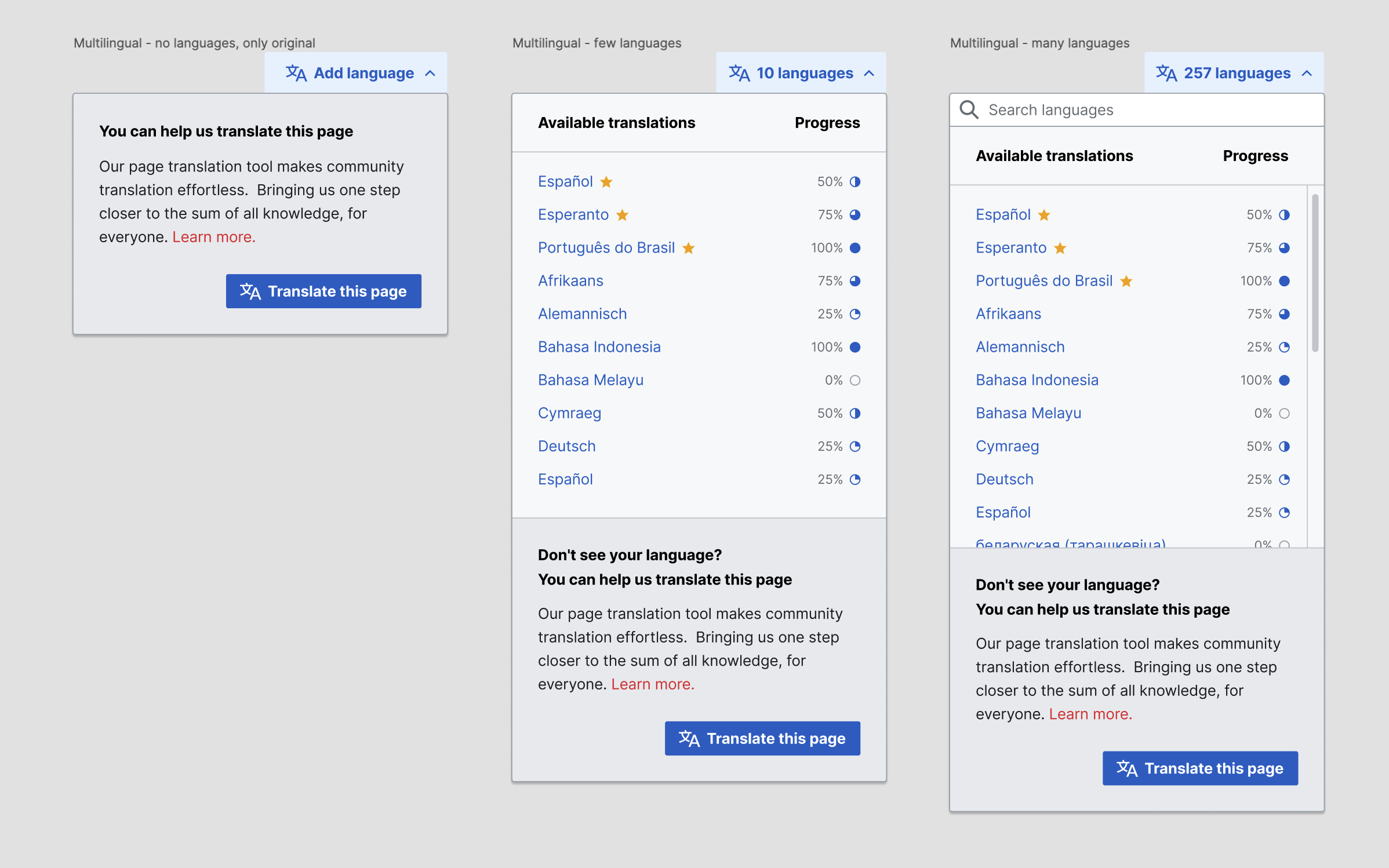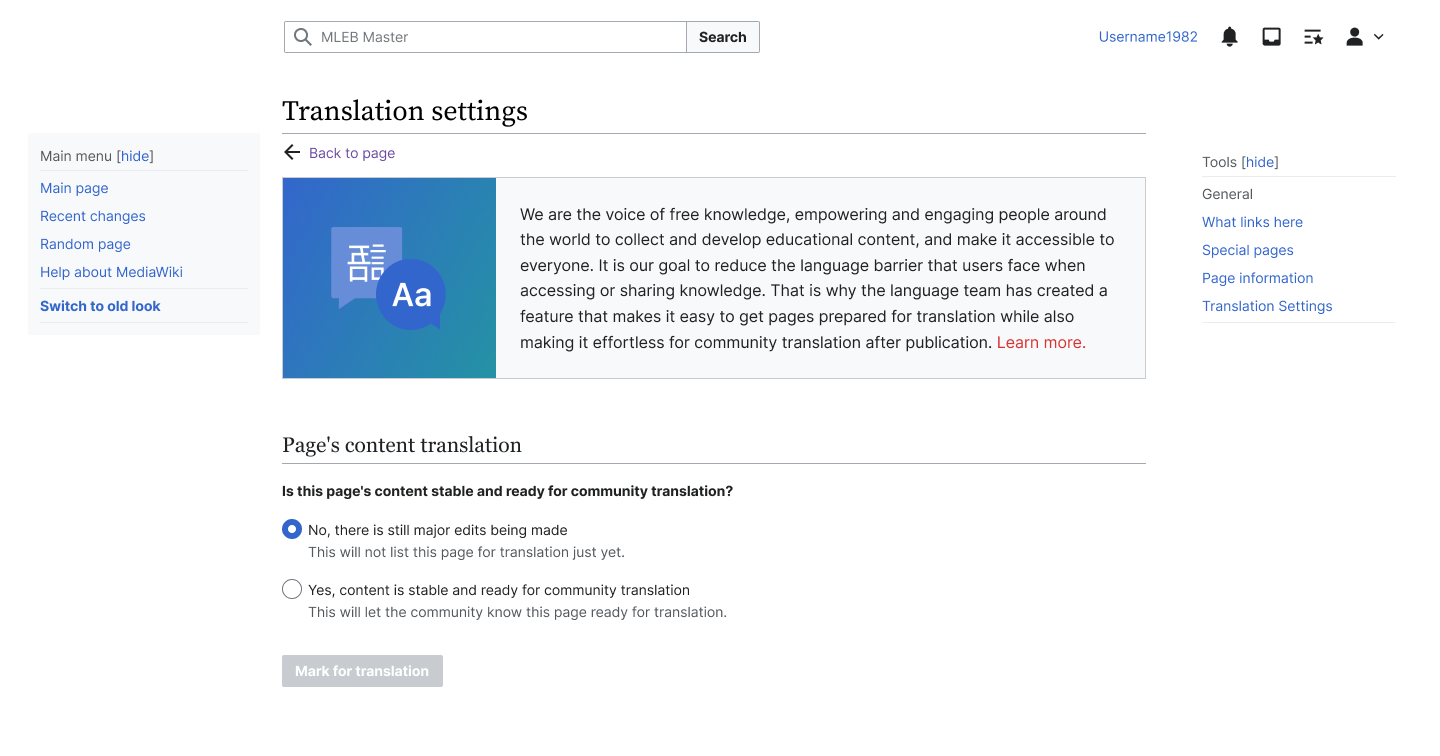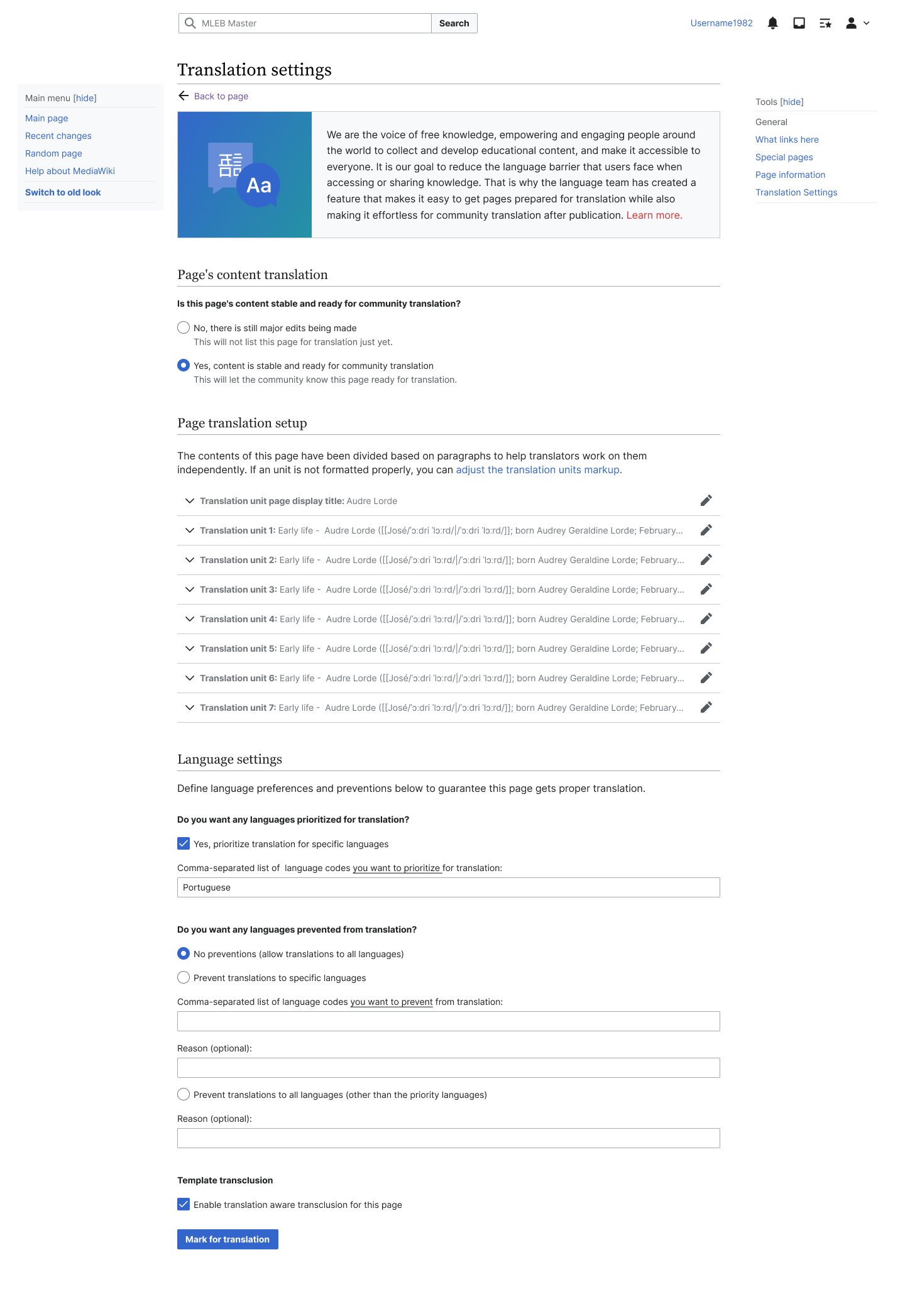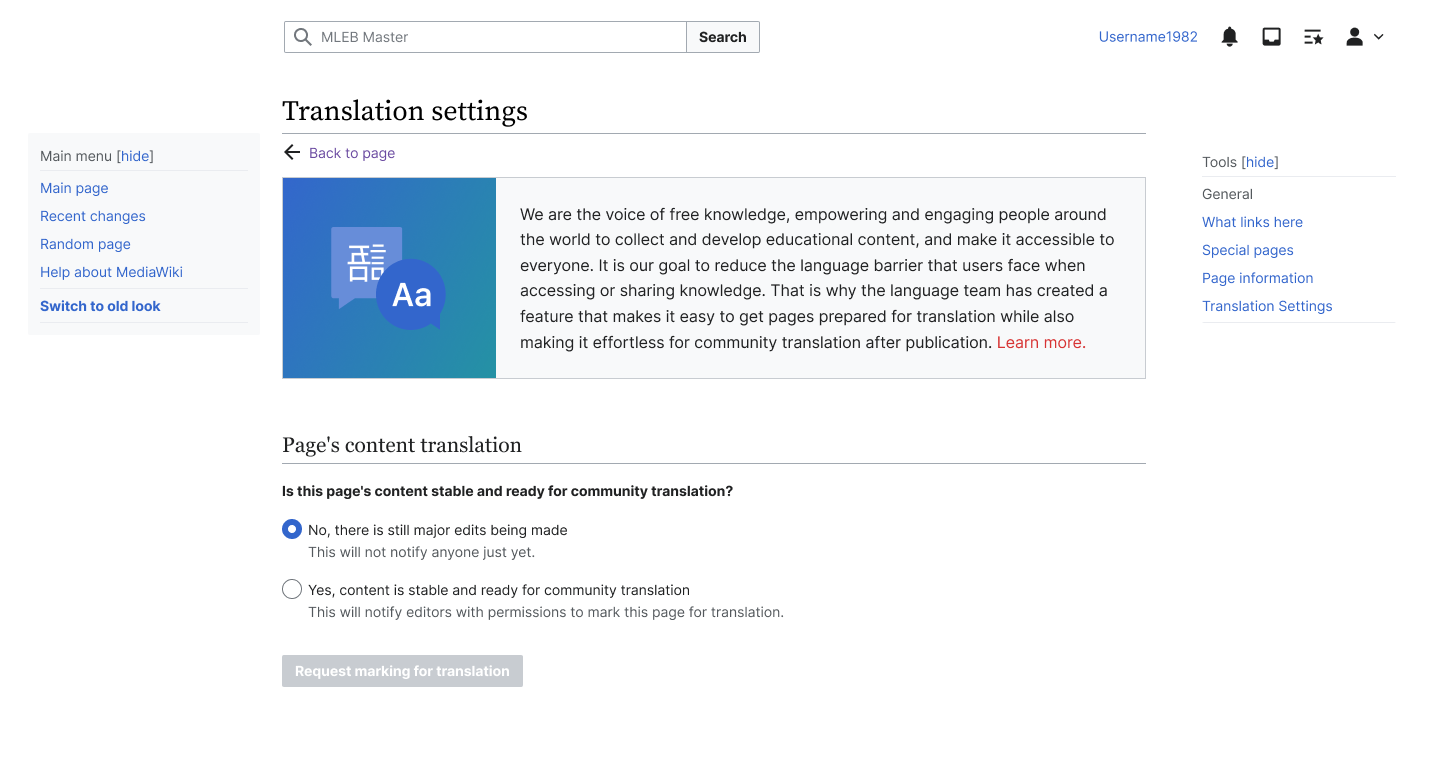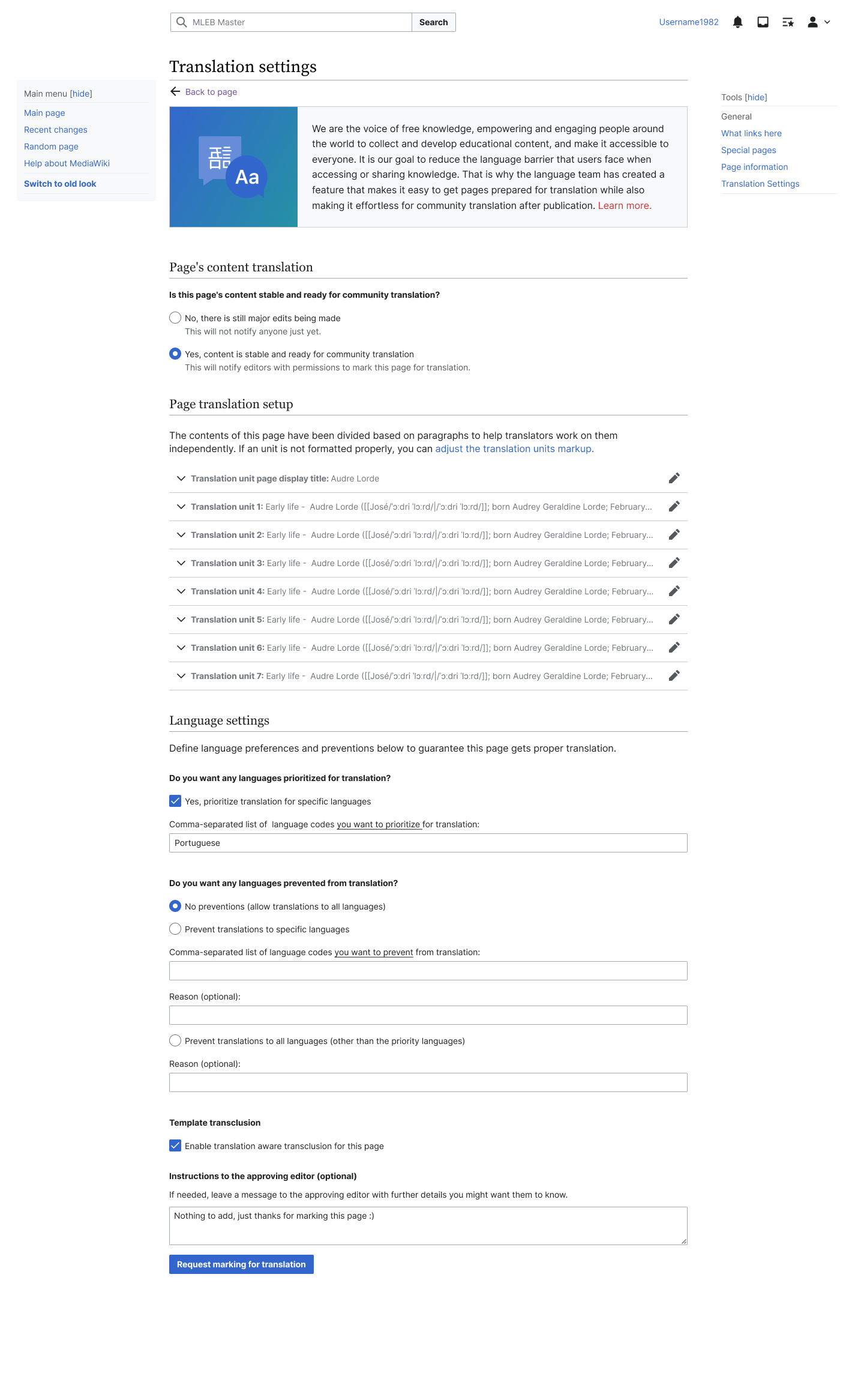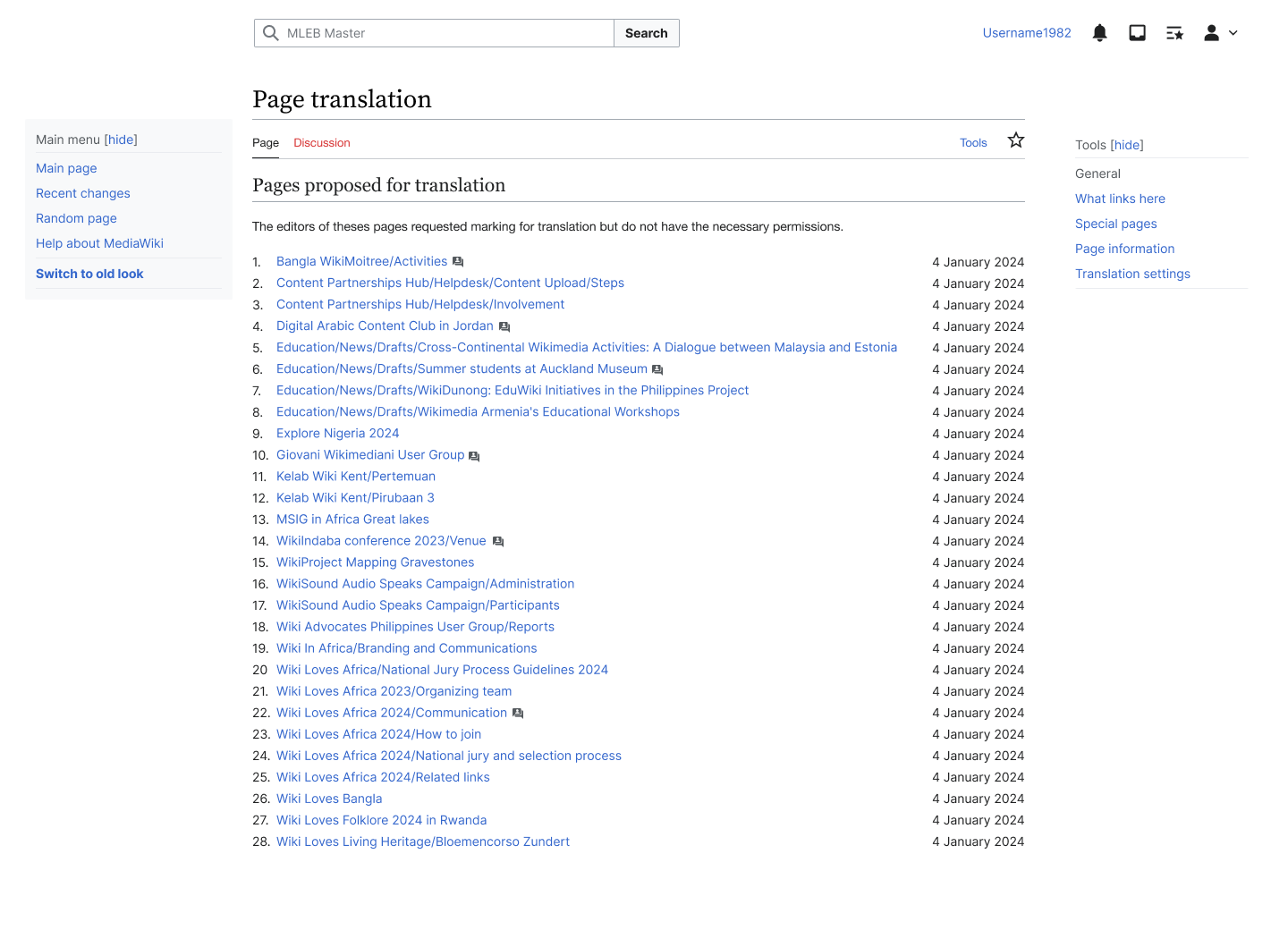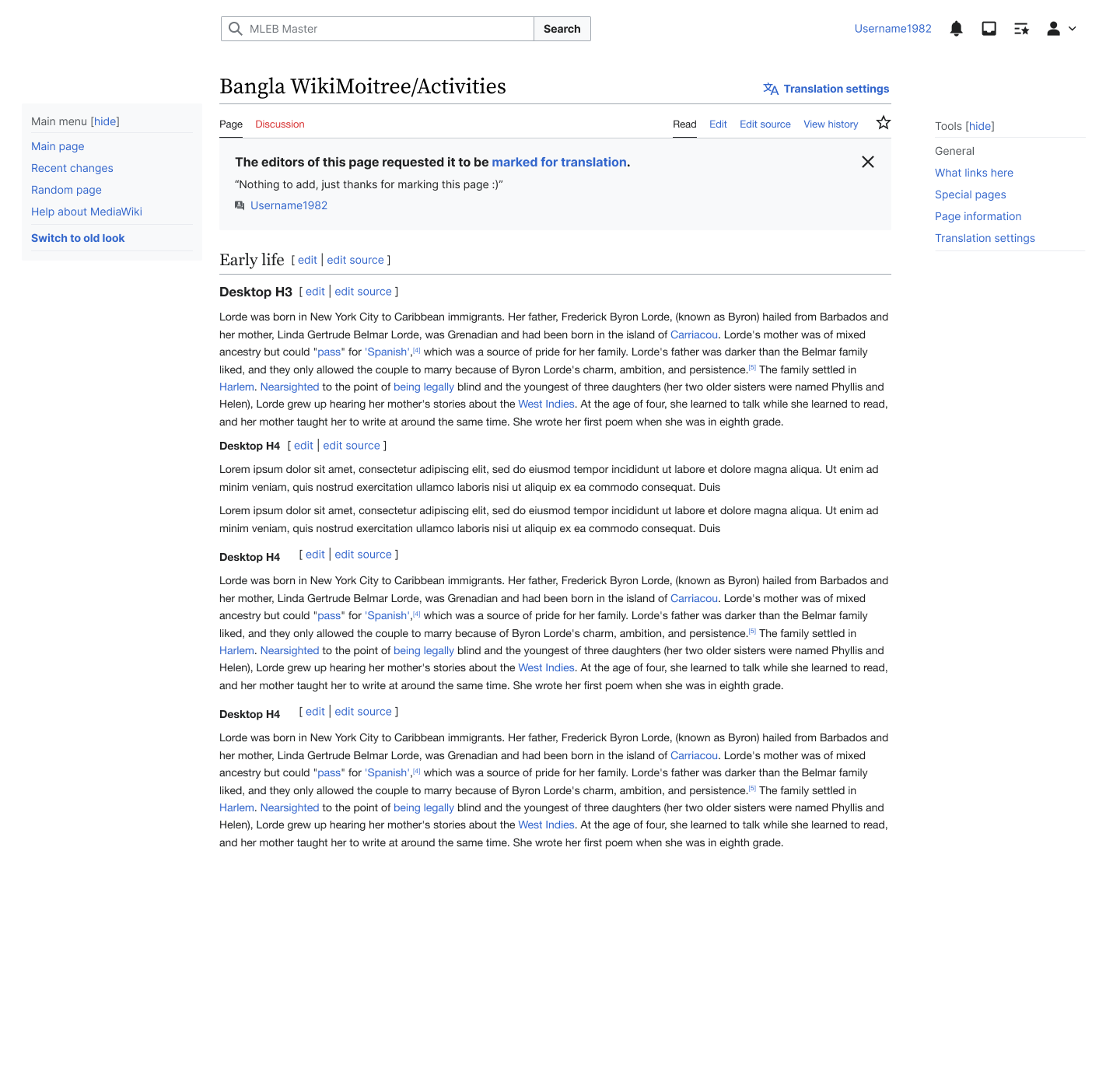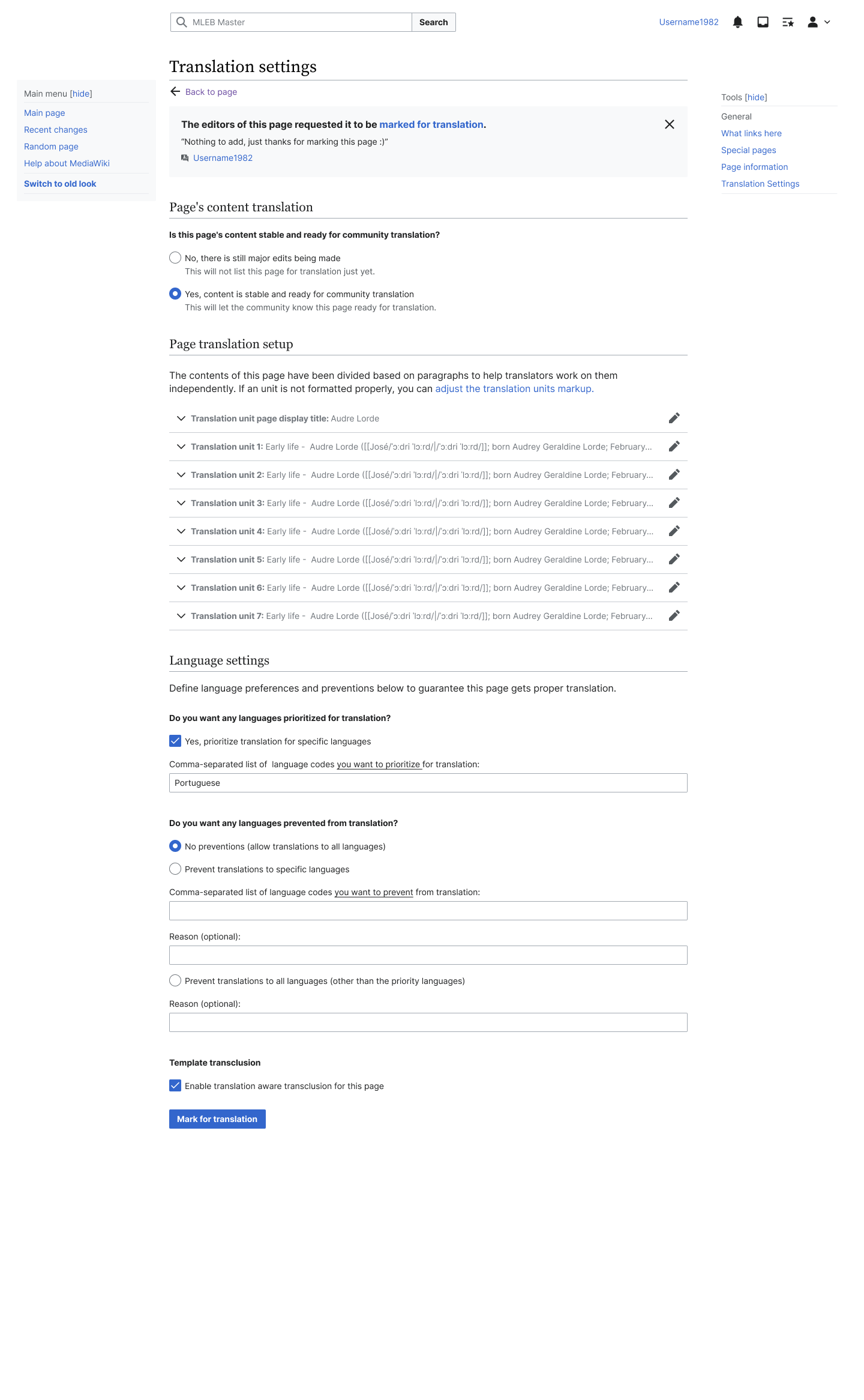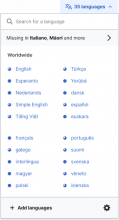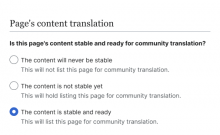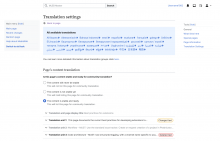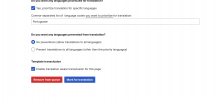Based on research (T334861), people were either not aware of Special:PagePreparation or found it not useful. This task is about improving discoverability, while other functionality improvements are tracked in T348497: Special:PagePreparation improvements [FY2023/24-Q2].
Some specific issues to consider:
- Visibility of the option to "Mark for translation".
- Guidance to help understand the context (why mark for translation? what will happen next?)
- Alternatives for those editors lacking the rights to mark the pages for translation.
- Encouragement to make a page multilingual for the first time (we may apply this only when the next steps of the workflow have been improved too)
Initial open questions to start the exploration:
- When would be the best time to let the user know they can make a page to be translatable?
- Where would user expect this kind of functionality? Does it make sense to reuse patterns or integrate into the Language Selector?
- How to support users with different permissions?
- redirecting user to Special:PagePreparation to do the preparation themselves
- after preparing, if they are admin we can point them to Special:PageTranslation to mark the page
- after preparing, if they are not an admin, we can explain that admins can mark the page for translation and the page shows up in a todo list for them (or do we need a different queue for manual requests?)
- letting the user to make a request that translation admin handles both preparation and marking for translation
- redirecting user to Special:PagePreparation to do the preparation themselves
Scenarios to be considered will include (a) first time marking for translation, (b) marking for translation after the page has been updated. For those, users with and without the translation admin rights will be considered.
Observations
The study points out some pretty clear challenges we need to tackle.
Barrier to access
User research found that this feature, while very useful, is a bit too complex for our users, both new and regular. Right now, users can only activate it via the <translate> markup. This means they need to know how to edit source code, remember and understand the <translate> markup, and how to use it.
Unclear Steps
Even when users manage to implement the translate markup, they still need to work through the process, which has some steps that can be a bit confusing due to similar wording but different outcomes. This process is in two parts:
- Setting up Translation: This involves adding the <translate> tag and picking out the language/translation settings, such as choosing/preventing languages for translation, deciding if the title should be translated, etc.
- Marking for Translation: This is where the page needs to be flagged for translation. If this doesn't happen, editors aren't notified and the page ends up in a queue waiting to be marked for translation.
Current User Flow
To add clarity, the current user flow was documented. Here's a summary of the process:
For a New Page:
- A new page is created by the editor.
- Once the page is ready,
- The <translate> markup is added in the source editing mode before the text and </translate> at the end. (Considered as 'setting up for translation’.)
- Page is saved, also known as published.
- On the page view, a button that says "mark this page for translation” appears above the content.
- User applies necessary translation settings, and if:
- Permitted, the user marks the page for translation.
- Not permitted, the process ends here, the page is added to a queue for marking by others in the community.
- "Translate this page” link appears on top of page in view mode
- Translation by the community proceeds.
For Page Edits:
- An existing page is edited.
- Once the update is ready,
- Changes are saved, also known as published.
- A button that says "mark this page for translation” reappears above the content on the page view.
- User applies necessary translation settings, and if:
- Permitted, the user marks the page update for translation.
- Not permitted, the process ends here, the update is added to a queue for marking by others in the community.
- "Translate this page” link appears on top of page in view mode
- Translation of the update by the community proceeds.
Initial Thoughts
To overcome the challenges identified, several changes and proposals are suggested.
- Clarify the Process: While the Wiki has thorough technical details, it could benefit from more user-friendly explanations. By improving the messaging throughout the user journey, emphasis can be placed on the significance of making a page translatable.
- Encourage User Adoption: More visible ways for editors to access the feature can be introduced to lessen reliance on using the translate markup in the source editor. Additionally, more opportunities should be provided for editors to prepare a page for translation.
- Streamline the Process: A quick amendment would be to use distinct terms for each stage of the process to avoid confusion. A more transformative approach could involve altering the process to reduce decision making on the user's part. More details to follow.
Explorations
Many suggestions have been considered, ranging from new entry points, altering user journeys, introducing new terminology, and adjusting settings. The details are elaborated in the link below. It's important to note that this is an ongoing endeavor and all technical specifics haven’t been finalized yet. However, the immediate focus is on the most promising revisions identified by the team.
Key ideas
- Reset expectations on multilingual content. Multilingual content is key to support the Wikimedia vision of universal access to knowledge. We want multilingual content to be the norm and encourage its creation by highlighting its important role in our movement.
- Improve visibility and consistency. Users with no previous knowledge should be able to easily find the options to make contents multilingual at the key moments they need them the most. In addition, providing access points from related parts of our system (e.g, tools menu, language selector) can help with discoverability while keeping overall consistency.
- Simplify concepts. The process primarily demands two actions. First, making a page multilingual (a proposed new term for “set up for translation”), then flagging it for translation by the community. We could streamline this by defaulting all pages to be multilingual (yet easily reversible), leaving only the step of marking it for translation for the user. For each action, we want to make it clear why should users do it, and which are the important considerations and consequences of it.
Proposed user journey and design changes (so far)
The work has been presented to the language and translation team and the engineers presented some feedback but no official decision has been made about this solution.
1- The page creation/editing journey goes mostly unchanged, with the exception of a banner explaining the changes in page language settings informing that now every page is multilingual (former “set up for translation", or adding the translate markup).
2- The other change comes after publication, in view mode. After a page is published, any editor viewing the page for their first time will see a banner asking the user if they want to mark the page for translation. This banner tells a little bit about the importance and easiness of making a page translatable. The banner will take the editor (the page editor or any other editor with permissions) to the translation settings page.
3- Here the editor can read more about the organization's goal of making information available to everyone with a link to read more about it. This link should lead to a page (yet to be designed) where the organization explains more about their goal and also offer all technical details and tools already existing for this feature.
The "make page multilingual” toggle is on by default on every new page. If turned off, the user will need to provide a reason why the page is not to be translated into any language (although required, the answer is a non-block action, no other confirmation is required).
The language settings (prioritization/prevention of languages, title translation…) goes mostly unchanged.
When marking a page for translation, the team realized that offering the user an opposing choice would help them understand the contrast between each option. Here the user can make only 1 of 2 choices:
1- Yes, mark for community translation: This will let editors know this page ready for translation.
2- No, there is still edits being made: This will not list this page for translation just yet.
These opposing options come with clarification so the editor understands exactly what choice to make depending on the progress of their page.
After a page is marked for translation, the page now shows as normal, but instead of having a "translate this page” link above the text, the language selector will play a centralizing role. Being the "place to go” for translations.
1- If no other translations are available (only the original language): label reads “add language” followed by a message and option to translate that page.
2- If any translation is available: label reads # languages (ex: 4 languages), followed by option to search for languages, list of languages, and the same message and option to translate that page into another language.
Once an editor chooses to translate into a new language, the translation journey follows unchanged to as it is today.
